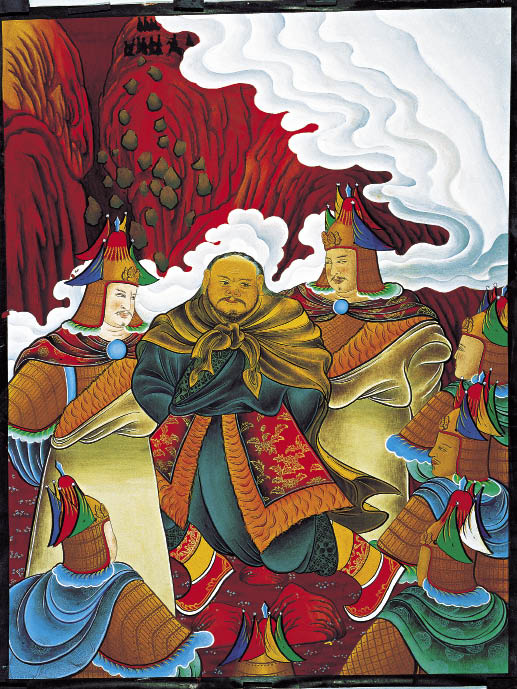|
King Gesar —— World's Longest Epic
By staff reporter XING WEN
IN Tibetan-inhabited areas, the name Gesar is a household word. The epic of King Gesar has him descending to earth at the behest of the God of Mercy to rule Tibet and to defeat demons.
Originating from oral folklore, the tales of Gesar have been passed down through generations for over 1,000 years. It is the longest and last living epic in the world, containing over 20 million words in more than one million verses – 25 times the length of Homer's Iliad.
This long and detailed legend with its magnificent structure fills vast volumes, and is the greatest and richest work of Tibetan literature, guiding many Tibetan believers with its wealth of knowledge. Its widespread influence makes it a goldmine for researchers of ancient Tibetan history and society. The epic also interweaves myths with tales of magic and at the same time encodes a wealth of cultural material. It is considered to be not only the greatest accomplishment of the ancient folk culture of the Tibetans, but also a great contribution to human civilization.
It was listed by the Chinese government as a national intangible cultural heritage in 2006, and in September 2009, UNESCO inscribed it on the Representative List of the Intangible Cultural Heritage of Humanity.
Legend of a Hero
 |
| Tibetan thangka representing episodes of Gesar's life. |
The epic was born between the end of the clan society and the beginning of systemic slavery, during the battles that raged between clans and tribes, and which served as the source of the hero's tale.
Set far in the distant past, it was a time when the people of the Tibetan Plateau were subjected to natural disasters and calamities. The Goddess of Mercy responded by sending the son of the heavenly god to the world to triumph over evil. The son, later known by the name Gesar, descended to the earth with miraculous powers.
But seeing the child as the fulfillment of divine prophecies, Gesar's greedy, power-hungry uncle sought to seize control of the country and viewed his nephew as a threat to his ambitions. He banished the child and his mother from their homeland Ling. However, a life in exile enabled the boy to grow precociously strong and valiant. At the age of 12, Gesar defeated his uncle and others among the tribe's best warriors in a horse race held to determine who would become the king. The other prize was the hand in marriage of a neighboring chieftain's daughter, Drumo. Gesar's victory made him chief of Ling.
As soon as he ascended the throne, King Gesar led expeditions against the demons. But while he was on the campaign, his wife Drumo was kidnapped by enemies from a neighboring kingdom. Informed that Queen Drumo was the most beautiful lady in the area, the king of Hor sent troops to attack Ling and capture her. To rescue his queen, Gesar used his magic powers to kill the evil usurper. The war between Ling and Hor constitutes the central part of the story, and contains the most enlightening materials in relation to Tibetan history and culture.
The chief of Jiang Kingdom, Sadain, always cast his covetous eyes on the saltern in the territory of Ling. Gesar first positioned his troops to guard the saltern, and then incarnated into a tiny gold fish. Sadain then swallowed him in a drink of water. Once in the stomach, Gesar became a large wheel that turned endlessly until the agonized Sadain surrendered.
| 